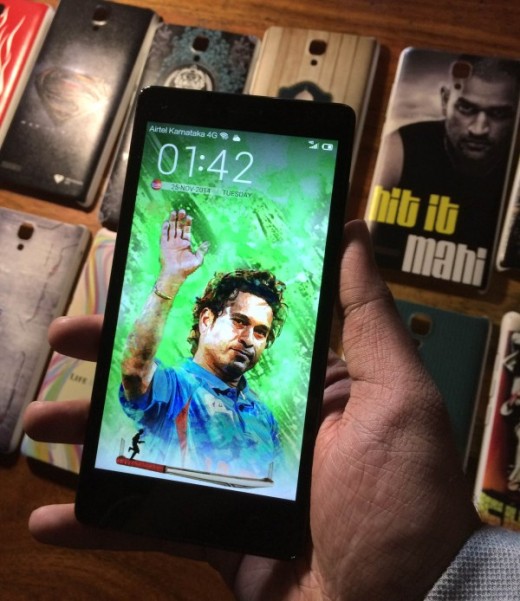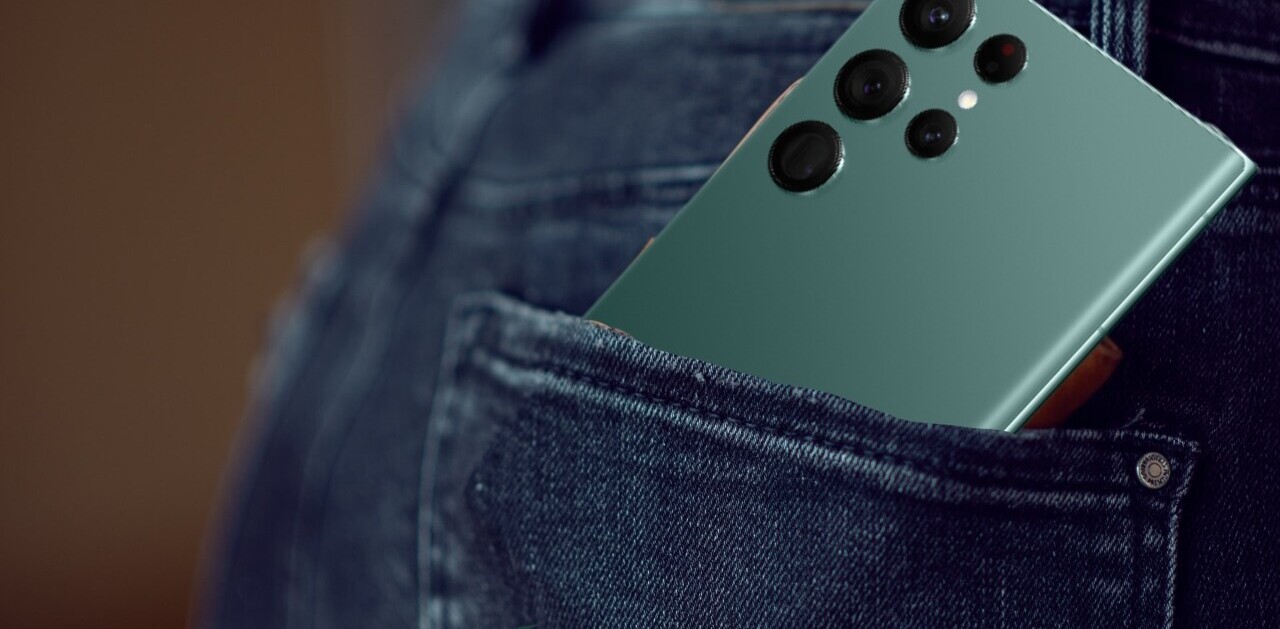
Xiaomi’s Global VP Hugo Barra spoke to TNW yesterday in Bangalore at the launch of the Redmi Note 4G, the company’s first 4G device in India.
After presenting the new device, Barra chatted about Xiaomi’s plans for developing MIUI features and themes in its new India R&D center, experimenting with sales methods online and offline, getting on board the Android One program in the future, and participating actively in the 4G-enabled smartphone revolution in the country.
Given that Indians are used to shopping at brick-and-mortar stores and traditional ecommerce stores, and Xiaomi has been implementing flash sales since its entry into India,do you foresee the company continuing to follow the same sales methods here over the next few years for its devices?
Barra: Yes, I certainly see ecommerce as our primary mode of sale, as it’s what we’ve been doing for the past few years in all of our markets: it works well, it’s predictable, it’s easy to understand and it’s easy for people to share and explain to their peers. And in some ways, it’s the easiest way to buy a device.
Having said that, people do want to experience products before they buy them. But we want to challenge that assumption. We believe in the power of word-of-mouth to drive customers’ interests, and we don’t think you always need a physical presence to try before you make a purchase. So we want to explore different models, try new ideas in sales and find out what people are most comfortable with, over time.
Going all the way to offline sales is very difficult for us, because of the economics of the brick-and-mortar model. There’s a distributor, a reseller, a franchisee sometimes, and they all need to make money. But because we want to price our devices so aggressively, pretty much at cost, it’s not easy for us to adopt that model. We would consider it if the ecosystem is willing to work with us.
So what we’re doing in India, is we’re taking baby steps: we’re currently implementing a model here with Airtel, which we haven’t tried anywhere else. In other markets we work with carriers who sell our devices, but that’s in the post-paid subsidy model. It’s very complimentary to the flash sales model, as you often pay nothing for the device thanks to the contract.
But in India, where there’s no subsidy and customers buy phones without contracts, that model doesn’t work, and so we’re trying out a hybrid model: you still have to register for a limited number of devices, but you only pick up and pay for your device in-store. You can go into the store at any time to try out a device, but you can’t buy it unless you’ve pre-booked it.
This hasn’t been done before in the country, and we believe Airtel is the right partner to try it with — they’re the #1 carrier in India, and it’s an honor for us to be associated with them. So we’ll see how that goes, learn from it and decide what to do in the future.
We aren’t ruling out the possibility of working with offline retailers, but we certainly don’t want to compromise on our pricing just to sell in stores.
What we’d like to do is team up with distributors, with the understanding that while they’ll make minimal profits from selling devices, there are healthier margins on accessories, of which we have a wide range. If you do a really good job of selling devices and accessories together, the bundle will help you make a nice profit. Though we sell our accessories at very low prices, we have better economics that we can offer our partners on them. The accessory business model was built such that we could make money from it, while we sell our devices nearly at cost.
From developing the Redmi Note 4G and partnering with Airtel in India to launch the device, do you yet have an inkling of the rate of 4G adoption we can expect in the country?
Barra: I don’t, yet. I’m of course, very optimistic, and I think that the social impact of 4G in India could be greater than any similar rollout anywhere else in the world. This is because a lot of people in India get online only via their mobile phones, as they don’t own or work on a computer in their daily lives. So imagine what happens when these mobile users begin to connect to the Web at 10 times the speed? The implications are tremendous, for business, entertainment, remote medicine and education. Just imagine the power of YouTube alone and the education content available there today, and the social impact it can have.
So, while I don’t yet have enough data points to ascertain the rate of adoption, I’m hugely optimistic about 4G in India. Airtel and others are hugely committed to it. And as we try to incorporate ourselves into the fabric of India, being the first company to launch an affordable dual-band 4G phone is an incredible achievement. I feel really happy about that.

Is Xiaomi also looking to participate in the Android One program to bring low-cost devices with standardized specs and regular OS updates in India and other markets?
Barra: We’re huge fans of Android One, and we want to be part of it. It’s just a matter of time, timing and other details, but we’d definitely like to get to it. As for India, 4G is going to become part of what we do here. We want to be all-in with 4G here; while we got started 4G a little late in other markets, we want to be an early adopter of 4G in India.
At the other end of the spectrum, are you also interested in competing in the high-end mobile device market, against the likes of HTC?
Barra: For sure. With the Mi4, we’ve already proven that we know how to build beautiful devices. On that front, there are some amazing things in the works already, so keep an eye out for all that in the future.
What are Xiaomi’s plans for rolling out Android 5.0 Lollipop across its range of mobile devices?
Barra: Upgrading to Lollipop is my #1 priority from a product perspective for our global business. As you know, we customize Android significantly and have our own design language — so what we’re tasked with now is not only all the technical aspects of putting Android 5.0 on our devices, like at the kernel level, but we also have to marry Google’s Material Design language with ours.
We want the best of both worlds for our customers. That’s in full swing at the moment, and you can expect MIUI 6 along with Android 5.0 on our Mi line of devices by the end of Q1 2015. That update will come to our Redmi devices too, but we don’t yet have an exact timeline just yet.
What are your thoughts on the wearables market in India? Do you think that the technologies available make them appealing enough for budget-conscious buyers yet?
Barra: I think that the current price points for most smartwatches and fitness trackers today are unrealistic for India. I think that smartwatches should be below $160 (Rs. 10,000), and maybe start at $95 (Rs. 6,000), and fitness trackers should be below Rs. 1,500 (~$25) to sell well here.
Things have come a long way: look at FitBit’s latest watches and the Jawbone Up: they’re amazing devices with great software and are beautifully designed, but they’re just too expensive. The same applies to the Apple Watch, which will set a new standard for quality, as the company always does — but the price is too high for success in this market at present.
Can you tell us a little more about Xiaomi’s R&D center, and manufacturing plans in India?
Barra: We have two product managers in place in India already, Rohit Ghalsasi and Jai Mani, who are overseeing MIUI features and services development and theme design at our local R&D center. We’re also looking to hire more engineers for these efforts soon. I also see this center working on not only India-specific features, but also on features for our global markets.
China is a bit of a world in itself, so the engineers there don’t yet have as comprehensive a world-view as their Indian counterparts — and that’s why I feel comfortable relying on the instincts of Indian product managers when it comes to building features for our global market.
As for manufacturing in India, we’re currently in the early exploratory stage, with no concrete plans as yet. Manufacturing here would certainly help us manage our costs, and deal more easily with taxation locally.

Let’s talk TVs for a bit. You mentioned to Forbes recently that you’re keen on bringing not just the screens, but also the accompanying content and tailored experience to India. How do you see that panning out, given that Indian consumers are used to subscribing to cable TV?
Barra: Well, the ideal situation for us, is to be able to deliver a smart TV with substantial add-ons like local and international streaming TV shows and movies, and downloadable games and apps, side-by-side with your current cable TV setup. In an ideal world, the cable TV tuner would be integrated with the smart TV, allowing users to navigate all their content with a single remote.
However, achieving that will take a considerable amount of work. So, I’d be happy to first release an initial version that includes streaming content and apps, and allows users to switch input sources to enjoy their cable TV content. But this is still a while away, and there’s much to figure out before we bring our TVs and content to India.
On to tablets — Micromax has beaten Apple to the 2nd spot in the Indian market, right behind Samsung, and there’s certainly room for another major player here. Plus, you’ve been teasing the Mi Pad tablet for a bit here too — when can we expect those devices to sell nationwide?
Barra: We don’t yet have a set launch date for our tablets in India. The major issue holding us back is that the certification process for tablets is considerably longer, and it’s going to take us quite a while to sort everything out before bringing our devices here.
Xiaomi’s already beta testing low-priced smart home devices like Wi-Fi enabled cameras and power outlets, and Bluetooth-controlled lightbulbs in China. Are those coming to India soon?
Barra: That’s really a nascent effort at this point, and testing is on — but we don’t yet have a timeline for rollouts just yet.
Since you’re not big on chasing numbers as targets, what would you consider to be a victory for Xiaomi in India?
Barra: Launching our entire product line in the country, at the same time as the rest of our markets, and perhaps even begin dabbling in India-specific products somewhere down the line too — that’s what I’d consider as a win for us.
Get the TNW newsletter
Get the most important tech news in your inbox each week.





